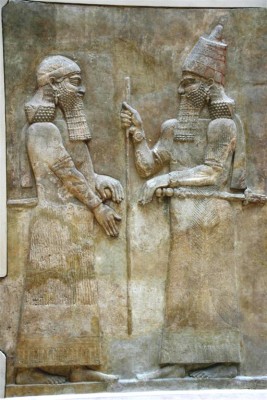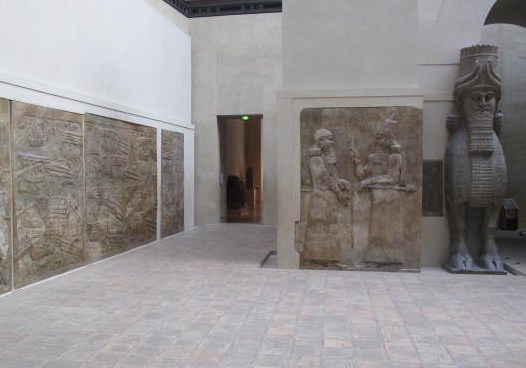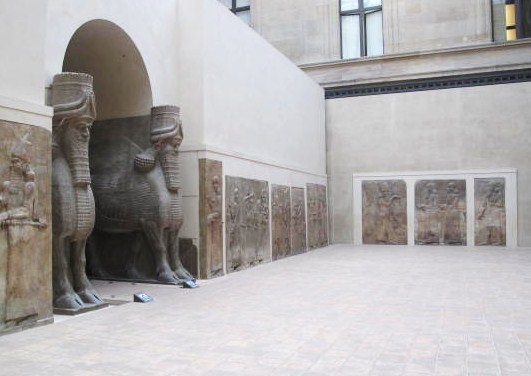Un jour, Une Œuvre,
19/12
Sargon II and a dignitary
AO 19873
Richelieu Room 4
The Assyrian king, mentioned in Isaiah 20:1, was released from the shadows of history and made historically famous with the discovery of the ruins of the Khorsabad palace. Long considered as imaginary by eminent biblical scholars, Sargon II is now one of most famous kings of Assyria.
King Sargon II, quoted in the Bible
He is here portrayed holding a stick next to a dignitary standing on his right, probably the crown prince Sennacherib.
The Assyrians mention their relations with the Israelites in their various texts. But the main purpose of the inscriptions on the monuments was not to provide a continuous history of the kingdom, as they rarely had a chronological order.
The king’s vanity often forced him to take liberties with historical accuracy. The royal annals also juggled with facts and figures for his own desire.
A26
This is the case of the sargonic documents.
As you can see, the 'disinformation' is not a new technique. Even the lists of eponyms or limmu, who only enumerate names, sometimes accompanied by a mention of a military campaign, are unreliable A27
"In the year that Tar´tan came to Ash´dod, when Sar´gon the king of As·syr´i·a sent him, and he proceeded to war against Ash´dod
and to capture it"
Isaiah 20:1
Even the synchronic Assyrian story, famous tablet containing a concise narration of the relations between Assyria and Babylonia, is not believed to be absolutely accurate. "We can not even consider this document as historical in the true sense, but simply as an inscription erected for the glory of Ashur. " A28
On the contrary, the honesty of writers of the Bible and their sincere desire to report the truth increases our trust in 'the word of God' (1 Thessalonians 2:13). The most reliable indications of synchronism between Assyria and Israel-Judah remain those of the biblical narrative.


